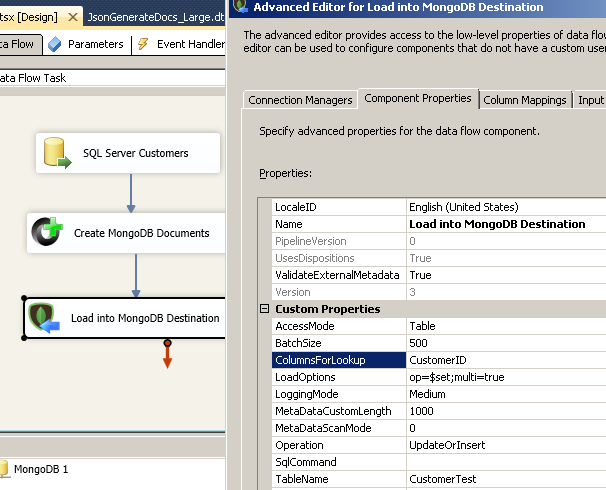

- MONGODB JSON QUERY HOW TO
- MONGODB JSON QUERY MAC OS X
- MONGODB JSON QUERY INSTALL
- MONGODB JSON QUERY FREE
This becomes important when the set of results is too large to be returned all together, and the user may need to specify how much, or what portion of results they actually want. The word cursor relates back to SQL where cursor is defined as a block of results that is returned to the user in one chunk. The fourth and last item sits after the find function ends and is separated by a dot, it's called a cursor modifier. The third term is a projection class which is essentially a list of variables that we want to see in the output. Otherwise, we'll fill it in a couple of ways shown in the next few slides. Now, if we want to return everything, then this filter is left blank. The second item is a query filter which lists all conditions that the retrieved documents should satisfy, so it's like a Where clause. So if the name of the collection is beers, the first part would say db.beers.find. The first is the term collection, this tells the system which document collection to use, and therefore is roughly similar to the From clause when restricted to one table. The primary query is expressed as a find function, which contains two arguments and an optional qualifier, there are four things to notice in this function. Now just like a basic SQL query states, which parts of which records from one or more people should be reported, a MongoDB query states which parts of which documents from a document collection should be returned. So we need operations that will let us navigate from one structure to any of it's embedded structures. Finally, this one has nesting, that means a mini structure can be embedded within another structure. As you will see, we'll address these tuples by their positions. On the other hand, the area called 'points', has two tuples, these two tuples named. Now, tuples can be thought of as relational records, as the operations would include, projection of an attribute, and selection over a set of tables. These key value peers are structured as tuples, often with a name In the snippet shown, favorites has a tuple of two key value pairs. The top level array does not have a key, by default it's called db. Notice here that the document collection here is itself an array, within square brackets and it's just two elements in it. Or we should be able to seek objects of which the key called badges has a value of blue. Thus, we should be able to ask for the second element of the array called badges.

So the query operations on it can either be on its position in the list or on the value. Now, the value can also be an array, an array is a list. To query a key value pair, we should be able perform one basic operation given the key, return the value. The atomic element in the structure is a key value pair, for example, name is the key and sue is the value, in this case, an atomic string value. Let's consider a simple JSON collection and look at the structures, substructures actually, it's composed of.
MONGODB JSON QUERY HOW TO
Before we start, lets review the details of the JSON structure, and get an initial sense of how to query this form of data. In this course, we'll focus on querying JSON data. In a prior course we looked at JSON as an example of semi-structured data, and we demonstrated that JSON data can be thought of as a tree.
MONGODB JSON QUERY MAC OS X
Software requirements include: Windows 7+, Mac OS X 10.10+, Ubuntu 14.04+ or CentOS 6+ VirtualBox 5+.
MONGODB JSON QUERY FREE
All required software can be downloaded and installed free of charge (except for data charges from your internet provider). This course relies on several open-source software tools, including Apache Hadoop. How to find your hardware information: (Windows): Open System by clicking the Start button, right-clicking Computer, and then clicking Properties (Mac): Open Overview by clicking on the Apple menu and clicking “About This Mac.” Most computers with 8 GB RAM purchased in the last 3 years will meet the minimum requirements.You will need a high speed internet connection because you will be downloading files up to 4 Gb in size. (A) Quad Core Processor (VT-x or AMD-V support recommended), 64-bit (B) 8 GB RAM (C) 20 GB disk free. Refer to the specialization technical requirements for complete hardware and software specifications.
MONGODB JSON QUERY INSTALL
No prior programming experience is needed, although the ability to install applications and utilize a virtual machine is necessary to complete the hands-on assignments. Completion of Intro to Big Data is recommended. This course is for those new to data science. *Execute simple big data integration and processing on Hadoop and Spark platforms *Identify when a big data problem needs data integration *Describe the connections between data management operations and the big data processing patterns needed to utilize them in large-scale analytical applications *Retrieve data from example database and big data management systems

At the end of the course, you will be able to:


 0 kommentar(er)
0 kommentar(er)
